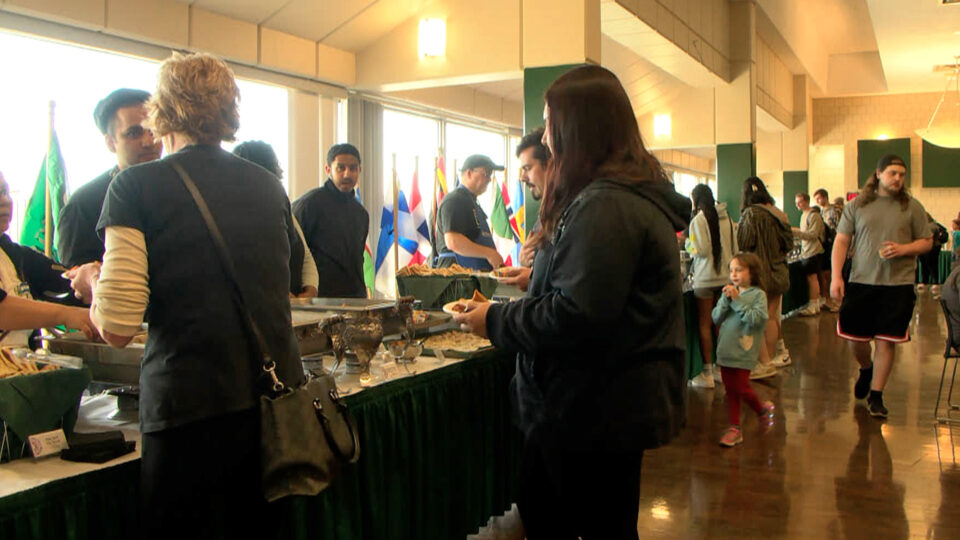Aug 13, 2018 | By: Josh Peterson
Ripe Wild Rice Harvesting Season Opens In Late August
Wild rice harvesting season occurs annually between Aug. 15 and Sept. 30 and wildlife managers from the Minnesota Department of Natural Resources say it’s shaping up to be a challenging harvest season.
More than 1,200 lakes and rivers in 54 counties contain wild rice, with concentrations of rice being the highest in Aitkin, Cass, Crow Wing, Itasca and St. Louis counties. But harvestable stands of rice can be found from the Canadian border down to the metro area.
“This year, wild rice conditions are variable across much of the state,” said Ann Geisen, DNR wildlife lake specialist. “In some parts of the state, rice stands are poor due to lots of rain and flooding. But in other parts of the state, the rice is looking really good. Harvesters who spend some time scouting waters for harvesting will probably have the best success.”
Peak harvesting dates are estimated to be in late August to early September as long as weather remains mild and dry. Like other forms of gathering, finding a mentor who is willing to share skills and knowledge can greatly improve success. Scouting lakes ahead of time can also be very helpful for finding harvestable stands of rice and locating access sites.
Minnesota’s green rice law makes it illegal to harvest unripe or “green” rice. So even though rice beds may look like they are maturing well, ricers must make sure the grain is ripe before attempting to harvest it. With many rice beds impacted by storms, harvesters will need to take extra care this year to make sure they are not harvesting too early and damaging the limited rice stands that remain.
Here are some updates from around the state:
Northwest Minnesota
Bemidji – The rice in the Bemidji area is variable. Much of the river rice is poor because several large rain storms uprooted the rice. Lake rice is similar, although there are bright spots because the winter and spring were dry. Upper Rice Lake, southwest of Bagley, will be the best spot in the area for rice. A fair-to-good crop is expected on Upper Rice, with a poor to fair crop elsewhere.
Detroit Lakes – The rice crop looks good in the Detroit Lakes area. Abundant rains in June and July had an impact on production, but overall stands are still in pretty decent shape.
Park Rapids – Wild rice looks good in the Park Rapids area. The recent rains caused some plants to uproot, but the beds look pretty good on most lakes and rivers.
Northeast Minnesota
Aitkin – Several large rain storms hit the area in June and July, drowning out or uprooting beds on many lakes and rivers. Some popular harvesting spots were completely washed out or severely impacted. Lakes with harvestable stands are limited this year, so pre-harvest scouting is highly recommended.
Brainerd – Several scattered large rain storms this summer impacted many rice beds and resulted in overall rice production fair to below average for the area. Scouting will be key for harvesters as some rice beds were entirely wiped out by rains, and others may not be ideal for harvesting because rice stalks will not be high enough out of the water.
Cloquet – The wild rice crop is expected to be average to below average throughout southern St. Louis County, all of Carlton County and the northern part of Pine County. The southern part of Pine County is expected to be below average to very poor due to multiple floods. Much of the area has had abundant rain and flooding in June and July.
Grand Rapids – Rice conditions are very spotty. Isolated thunderstorms in July dropped considerable rain that caused water levels to fluctuate quickly, uprooting rice plants on some rice beds. If the high water levels drop quickly, rice will be in danger of falling over. Pre-season rice scouting will be necessary to assess rice conditions.
Orr – Wild rice stands are average to below average due to the heavy rains earlier in the growing season that caused localized flooding. Rice beds of moderate density can be found in lakes and rivers that did not receive as much rain. Scouting will be necessary. Most stands are currently flowering.
Tower – Overall, rice beds are average to below-average due to the heavy and persistent rain storms earlier in the summer that caused localized flash flooding. Lakes and rivers that did not receive as much rain do have moderate stands of rice with some areas of higher density. Scouting will be needed. Most stands are currently flowering.
Two Harbors – It is shaping up to be an average year for rice with some lakes looking better than others. Sporadic, heavy rain storms did have an impact on some lakes and rivers in the Isabella and Brimson areas, but the recent drying trend has helped water levels return to normal. Scouting will be needed. Most rice stands are beginning to flower.
Central Minnesota
Fergus Falls – The rice looks really good this year in Otter Tail County. It varies among lakes, but there are many good, thick stands to be found.
Little Falls – This year’s rice crop seems to be better in Morrison and Todd counties than last year, but is still below average overall due to significant precipitation during critical growth stages. But the rice stands on individual lakes range from poor to good, depending on the exact location.
Metro area – The north metro area has so far avoided the torrential rain and flooding that happened elsewhere in the state. The wild rice crop looks very good to excellent here at this time.
Sauk Rapids – The rice is average to a little better than average, as rainfall has not been excessive.
In addition to being a traditional food source for Minnesota’s early inhabitants and an important part of American Indian culture, wild rice is an important food staple for migrating waterfowl each fall. The growing plants also provide important habitat for fish, invertebrates and waterfowl broods.
A license is required to harvest wild rice, unless a harvester is a Minnesota resident age 17 or younger and is accompanied by a licensed harvester. Wild rice harvesting regulations are available at mndnr.gov/wildrice with management and harvesting information at https://www.dnr.state.mn.us/wildlife/shallowlakes/wildrice.html
The 1854 Treaty Authority website at 1854treatyauthority.org provides updates from ground and aerial surveys on some lakes within the 1854 ceded territory in northeastern Minnesota. The aerial surveys are tentatively scheduled for mid- to late August; the results will be posted soon after.
Those interested in harvesting wild rice are reminded that it is unlawful to take wild rice grain from any of the waters within the original boundaries of the White Earth, Leech Lake, Nett Lake, Vermilion Lake, Grand Portage, Fond du Lac and Mille Lacs reservations except for American Indians or residents of the reservations listed. The Tribal websites have more information about which rice lakes are within the reservation boundaries.
In addition, all nontribal members wishing to harvest or buy wild rice within the boundaries of the Leech Lake Reservation must have Leech Lake Reservation permits.
Aquatic invasive species are a serious threat to Minnesota waters. Like any other water users, rice harvesters must follow cleaning protocols to avoid spreading invasive plants and animals, available at mndnr.gov/invasives/aquatic.
Harvesting licenses can be purchased online via desktop browser and smartphone at mndnr.gov/buyalicense or any DNR license agent. Funds from the sale of wild rice licenses support DNR management of wild rice, including managing water levels on wild rice lakes, improving or maintaining outlets and assessing habitat.







